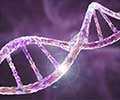Large-scale genomic analysis identifies previously unknown putative genetic mutations that lead to T- cell acute lymphoid leukemia.
Highlights:
- T-cell acute lymphoid leukemia (T-ALL) is a type of blood cancer predominantly seen in children.
- Genomic analysis of 264 T-ALL cases have discovered 106 possible mutation sites in which nearly 50% was previously unreported.
- New target mutations may lead to new treatment options and drug development strategies for T-ALL.
T- cell acute lymphoid leukemia (T-ALL)
Leukemia is cancer that affects the blood forming tissue including the bone marrow and the lymphatic system. There are several classifications of leukemia based on the rate of progression of the cancer and the type of blood cells that are affected by the cancer. Based on progression rate:- Acute leukemia: Involves immature rapidly dividing blood cells. The disease worsens suddenly and requires immediate and timely treatment.
- Chronic leukemia: Involves matured cells that slowly accumulate in the body. The disease progresses at a slower rate and may even go undiagnosed for years.
- Lymphocytic leukemia: Affects lymphocytes that form the lymphatic tissue of the immune system.
- Myelogenous leukemia: Affects the myeloid cells that give rise to red blood cells, white blood cells and platelet providing cells.
Genetics of T-ALL
While there is no evidence of T-ALL being genetic or hereditary (passed on from one generation to another), it is caused due to alterations in the genes. This alteration may be due to viruses, exposure to chemicals, UV, radiation or may occur spontaneously. However, individuals of a specific race or ethnicity have a higher risk of getting affected by the cancer; (eg: people from the African race have a higher risk of ALL than their Caucasian counter parts). The treatment of ALL and the development of appropriate drugs requires proper characterization of all possible mutations that result in T-ALL.Discovery of new T-ALL target mutations
A study conducted by 39 researchers and led by Dr. Mullighan were successful in discovering several new genetic targets responsible for T-ALL through computational biology analysis. The team conducted genetic analysis of 264 T-ALL affected children and young adults and identified 4165 single nucleotide variants, indels and duplications (different type of mutations), in 2694 genes. The study was also able to discover 4 possible germ-line (in the germ cell which are passed on to future generations) mutations that could be deleterious in the genes BRAF, BRCA1, BRCA2 and RUNX1. They were also able to identify 10 functional pathways that were recurrently mutated in T-ALL.Applications of the study
The study opens new horizons for studying the genetic mechanisms of T-ALL and its treatment. Some of the applications may include,- Development of mouse models that are genetically engineered to contain the T-ALL suspected mutations to accurately reflect human cancer.
- Since most of the mutations found are associated with known pathways, drugs may be successfully developed targeting those mutations.
- If the germ-line mutations of T-ALL are confirmed in mouse models, it would suggest that T-ALL may be inherited.
- Mutations in individuals with T-ALL that were until now a variant of unknown significance may now hold information on the predisposition to the cancer. This would be of significant help in genetic counseling of T-ALL and would facilitate early testing in case the mutation is present.
- Liu, Y., Easton, J., Shao, Y., Maciaszek, J., Wang, Z., Wilkinson, M., McCastlain, K., Edmonson, M., Pounds, S., Shi, L., Zhou, X., Ma, X., Sioson, E., Li, Y., Rusch, M., Gupta, P., Pei, D., Cheng, C., Smith, M., Auvil, J., Gerhard, D., Relling, M., Winick, N., Carroll, A., Heerema, N., Raetz, E., Devidas, M., Willman, C., Harvey, R., Carroll, W., Dunsmore, K., Winter, S., Wood, B., Sorrentino, B., Downing, J., Loh, M., Hunger, S., Zhang, J. and Mullighan, C. (2017). The genomic landscape of pediatric and young adult T-lineage acute lymphoblastic leukemia. Nature Genetics
- T-cell acute lymphoblastic leukemia - (https://www.ncbi.nlm.nih.gov/pmc/articles/PMC2635412/)













